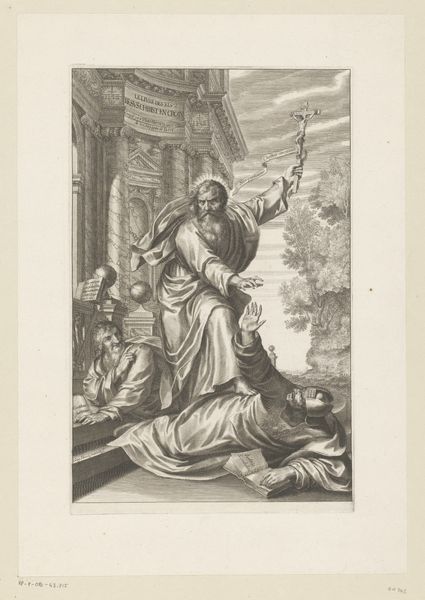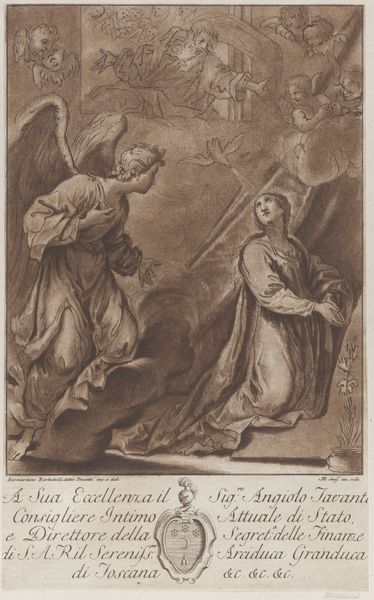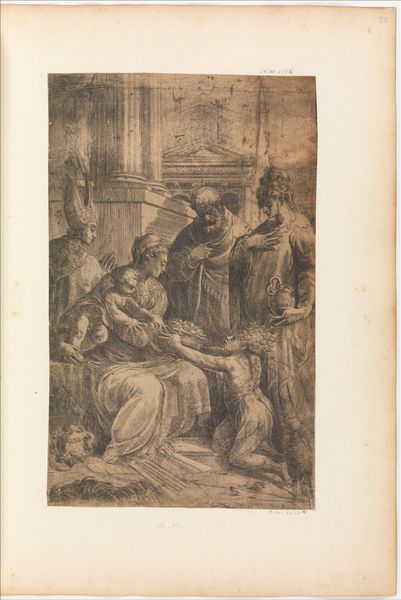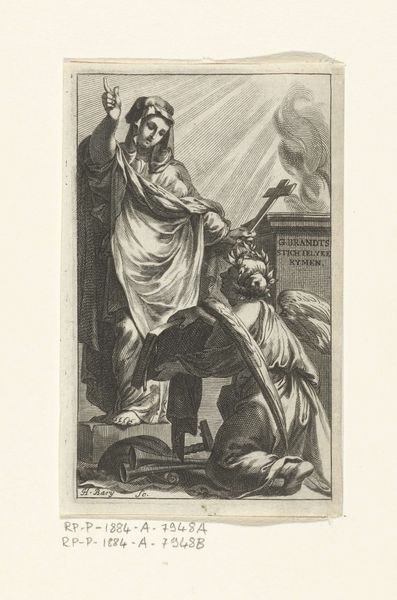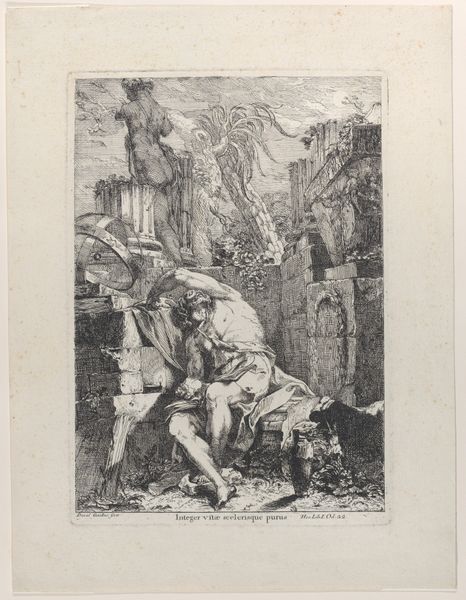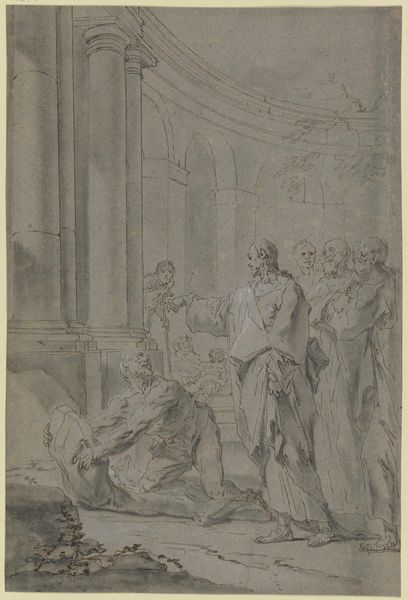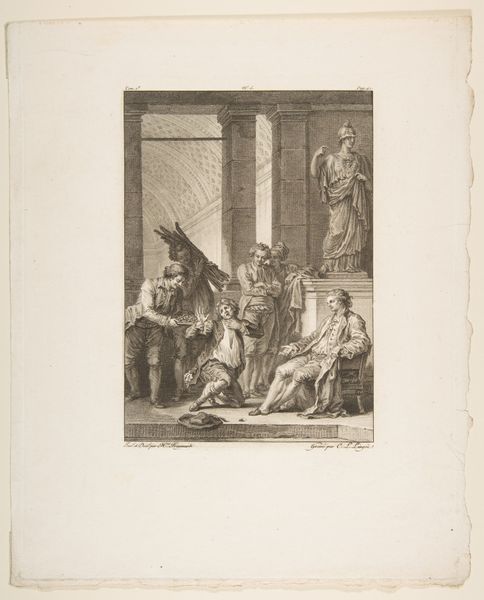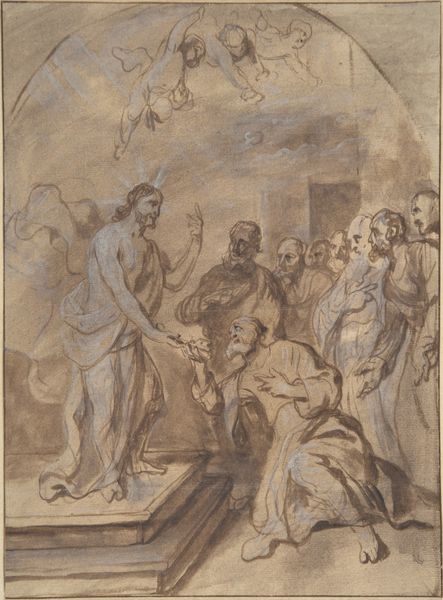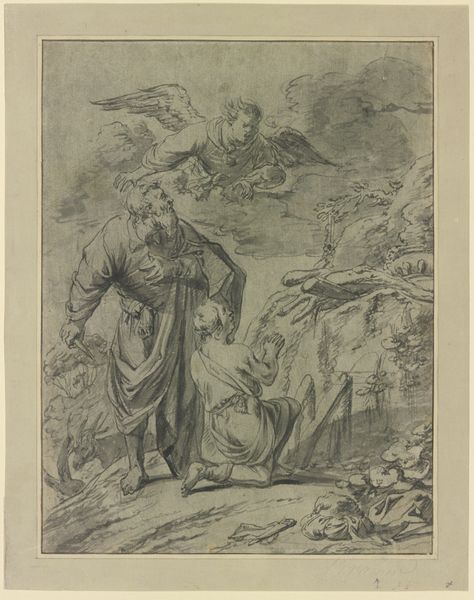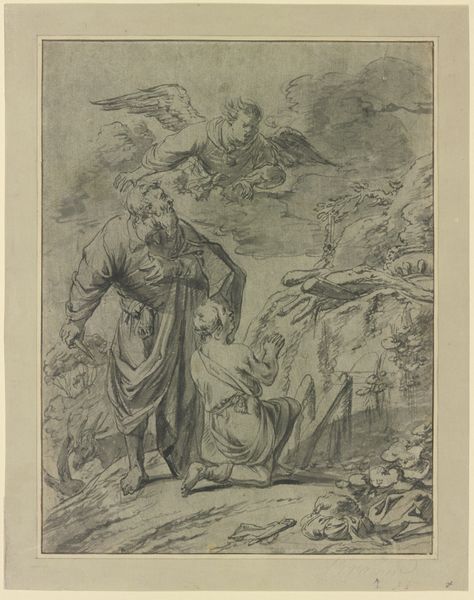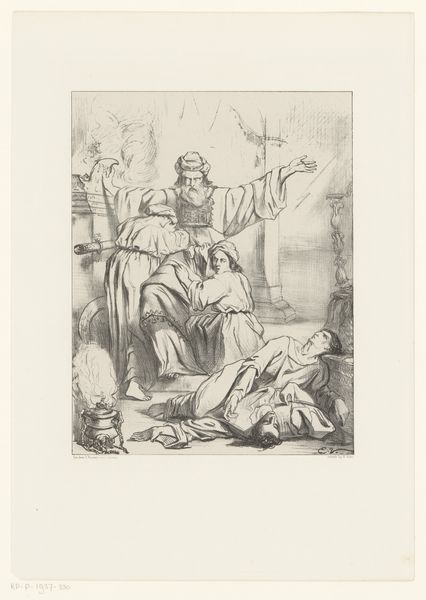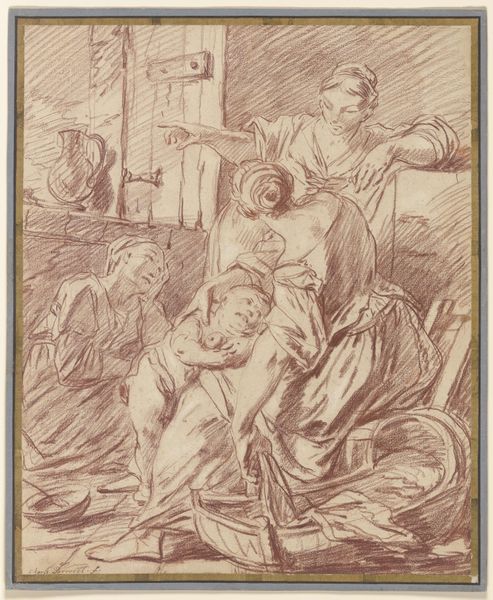
Petrus von Chateauneuf mit Kreuz und Märtyrerpalme und zwei das Ketzertum versinnbildlichende Figuren
0:00
0:00
drawing, paper, ink, charcoal
#
portrait
#
drawing
#
charcoal drawing
#
paper
#
oil painting
#
ink
#
15_18th-century
#
genre-painting
#
charcoal
#
history-painting
#
portrait art
#
watercolor
#
rococo
Copyright: Public Domain
Curator: Johann Christoph Liska's rendering of Petrus von Chateauneuf presents us with a complex visual narrative. Liska uses ink, charcoal and watercolor on paper, in a Rococo style, to depict a powerful, and quite frankly, disturbing scene. Editor: The overwhelming feeling I get from this is one of oppressive authority. The figure of Petrus is so much larger than those cowering before him. There's a real imbalance in the composition; the tone is muted, almost washed out, adding to this sense of foreboding. Curator: Exactly. This piece likely functions as both a history painting and portrait art, meant to lionize Petrus. Given the text beneath the image—referring to him as an inquisitor—it is highly probable this work portrays Petrus in his role persecuting those deemed heretics. The figures at his feet, who seem to be twisting away in terror, are key to its political meaning. Editor: And it's a brutal, stark reminder of how power, particularly religious authority, was wielded to suppress dissenting voices and impose a single narrative. It encourages viewers to take stock and connect this image to contemporary mechanisms of oppression. The martyr’s palm seems a little too eager. Curator: The placement of Petrus with his cross, towering above, reinforces a social hierarchy sanctioned, as Liska clearly intends us to believe, by divine decree. Consider the history of the location in which Liska creates this, amid power struggles and shifting political climates. Editor: Which begs the question: whose narrative are we being shown here? How does this depiction uphold or challenge those very power structures? And how does this influence its presentation here, in this gallery, now? Curator: Precisely. A crucial part of understanding historical artworks is questioning why and for whom they were created. It reveals so much about the intersection of power, religion and representation. Editor: Indeed. Ultimately, it encourages us to contemplate the legacies of intolerance and injustice that persist into the present day and hopefully we consider, as a consequence, how to avoid these atrocities.
Comments
No comments
Be the first to comment and join the conversation on the ultimate creative platform.
